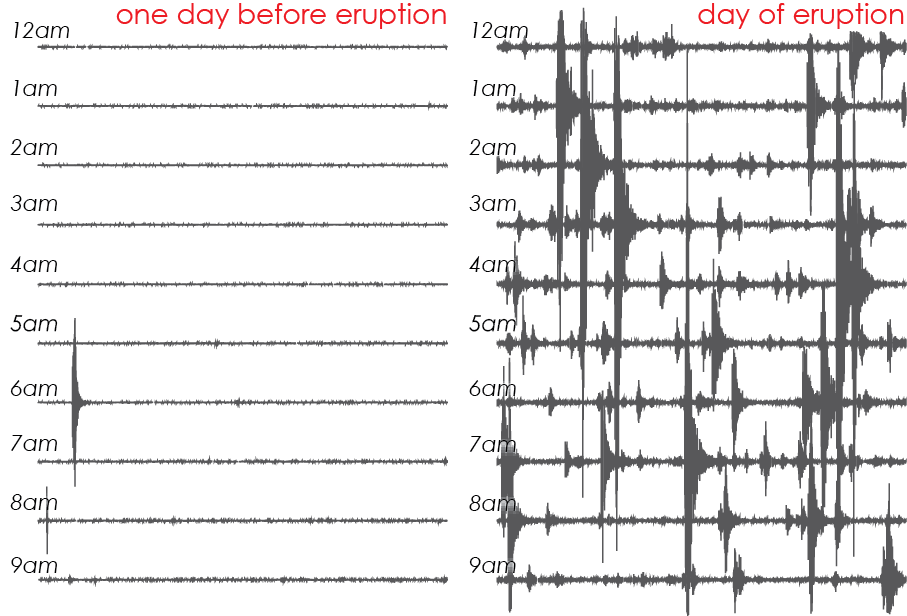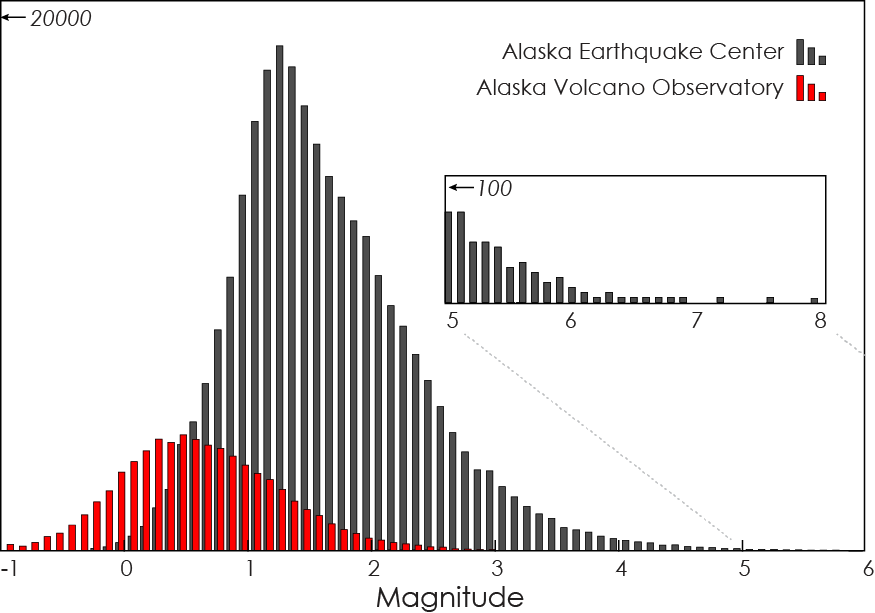Volcanoes

The earthquakes that occur near volcanoes are typically too small to be felt, and usually not damaging. They can, however, occur in very large numbers. Their presence can indicate the movement of magma or gas, or simply reflect the adjustment of stresses in the surrounding region. Some of these cracks occur off to the sides, others occur under the edifice and allow magma to creep upward. As magma begins to rise in the earth before an eruption, a volcano may expand and start to crack under the pressure. Each of these fractures creates an earthquake. These processes create the hundreds or thousands of earthquakes that precede most eruptions. Sometimes these earthquakes begin months before an eruption. Sometimes the lead-time may be just hours.

Identifying and characterizing earthquakes associated with volcanic processes requires its own tailored workflow. They must be separated from other earthquakes that are not volcanic in origin. To achieve this, the Alaska Earthquake Center partners with the Alaska Volcano Observatory. The Earthquake Center addresses large earthquakes and their societal impacts, while the Volcano Observatory focuses on the smaller earthquakes that can occur in large numbers near volcanoes.
Seismic data is only one tool for monitoring volcanoes. The Volcano Observatory combines these with other observations, including geology, satellite imagery, ground deformation, and local observations to assess volcano hazards.
For information about recent earthquake activity near volcanoes visit Recent Volcano Seismicity or the Alaska Volcano Observatory website.






